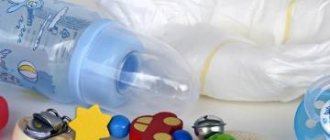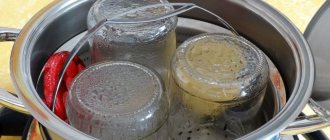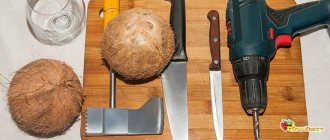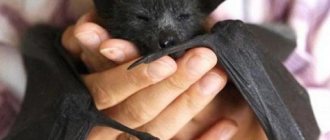Kosmoteros Professionnel Sunscreen cream SPF 30, 50 ml
952 ₽ More details
Kosmoteros Professionnel Sunscreen cream SPF 50, 50 ml
1683 ₽ More details
Kosmoteros Professionnel
It is necessary to sterilize your breast pump. Leftover breast milk is a fertile ground for the development of bacteria, which can subsequently cause inflammation of the mother’s breasts and indigestion in the child. Sterilizing a breast pump is a simple procedure that helps keep mother and baby healthy. There is a large selection of devices for antimicrobial treatment of these devices, but you can get by with a regular pan of water.
What is it for?
Before considering the question of how to sterilize a breast pump at home, you should understand what kind of device it is and what it is needed for.
A breast pump is a simple device that allows you to express milk from a woman’s breast into a special container. Currently, you can find two versions of this technology: with a manual and automatic basis. There are several reasons to buy a breast pump:
- It helps increase the amount of milk in the breast.
- Using it, you can strain maternal fluid into a special container and feed it to your baby through a bottle.
- You can express excess milk, easing the heaviness of your breasts.
Thanks to this device, you can save a young mother from many serious diseases, such as mastitis, the appearance of a tumor, premature sagging of tissues and much more. Do I need to sterilize my breast pump? Of course! This device should always be environmentally friendly!
Why does it need to be sterilized?
There are several reasons why it is imperative to sterilize your breast pump:
- Mother's milk, like any other, can turn sour. This will happen especially quickly if it is stored incorrectly. As a result, an unpleasant odor is formed, which will be quite difficult to get rid of in the future.
- If this procedure is not done in a timely manner, bacteria will begin to multiply. In the future, they will penetrate the child’s body, which will lead to the formation of colic, heartburn and even diarrhea.
- Even a thoroughly washed device can accumulate old milk residues. This can significantly spoil the taste of the liquid you have just expressed. Don’t be surprised if your baby starts actively spitting it out.
A young mother may not be at all interested in the question of how to sterilize a breast pump, only if she uses it only to relieve the feeling of heaviness in the breast, and she herself does not use its components to feed the child.
Should I buy a breast pump before giving birth?
We cannot give a definite answer to this question. There are two extreme positions: lactation consultants who will say that a breast pump is a waste of money, and reviews from mothers who bought and used this “unit” already in the maternity hospital.
If the money aspect is not an issue for you, then a breast pump is probably worth buying. It will find its use, if not in the maternity hospital, then in case of possible stagnation of milk (lactostasis), from which no one is immune.
However, it is possible to do without a breast pump. And if your goal is not to buy everything “just in case,” because later you won’t have time, perhaps this purchase is not necessary. When establishing breastfeeding, a positive attitude carries the lion's share of success. But a breast pump is still a purchase caused by doubts that breastfeeding will work well without any equipment.
When should you do this?
Another important question is when to do this procedure. Ideally, this should be done after each pumping session. That is, fresh milk needs to be poured into a small bottle, and all components of mother’s assistant must be carefully processed. How often to sterilize a breast pump for young parents depends only on how many times a day the pumping process will be carried out.
If the mother does not use this milk to feed the baby, then it is enough to treat the device once a day.
Why might you need a breast pump in the maternity hospital?
A breast pump may be needed in the maternity hospital in the following cases:
- The child and mother are in different departments of the maternity hospital . This, unfortunately, is still a fairly common practice in Russian medical institutions, but separating the baby from the mother can also be a necessary measure. For example, the reason may be the baby’s serious condition, being in intensive care or a department for premature babies. In such situations, a woman, willy-nilly, has to express milk in order to bring it to the baby.
- The baby may simply be “lazy ,” sleeping through feedings or eating a small amount of milk, and at this time the mother will suffer from a feeling of breast fullness.
- A breast pump can be useful if, after giving birth, problems arise with latching on to the breast - it was not possible to attach to the breast, the baby did not latch onto the breast, cracks appeared and the mother cannot learn how to attach, but wants to continue breastfeeding.
Preparatory work
Before moving on to the process of sterilizing a breast pump, you will need to do several preparatory procedures:
- You should carefully disassemble the device into several components. As a rule, this is a handle through which pumping is carried out, a container for storing liquid, a valve and various connecting components.
- Next, you should prepare a deep container or special bags. If a dish is used for sterilization, it must be made of glass or metal. It is strictly not recommended to use plastic products, as they can harbor bacteria. You may also need a small saucepan.
- It is worth preparing in advance the material on which the treated breast pump will be stored. It must also be clean. For example, you can use a boiled baby diaper, towel or gauze.
Once everything is ready, you can begin the main work.
Advantages of an electrical device
If you need to express milk frequently, the most convenient device for this is an automatic breast pump. You don't have to put in any effort, the device will do everything itself. With this tool, the process is significantly saved in time compared to manual instruments. The disadvantages of this type of equipment include high cost and noise during operation. Such devices cannot be completely sterilized.
Automatic devices are suitable for women who have to express milk frequently. This breast pump is very easy to use. Simply apply the funnel to the areola so that the nipple is in the center. Then you press the button and just watch the process. Before the procedure, the device must be sterilized, and then simply washed. The tool can be taken to the maternity hospital or used at home. The most popular model from this category is Medela.
The easiest way
Many young mothers are concerned about the question of how to sterilize a breast pump at home without spending a lot of time. It's very easy to do. To do this, you need to purchase special sterilization packages at the pharmacy, the cost of which is about one hundred rubles. The processing process consists of several stages:
- Each part of the breast pump should be washed under running water. You can use baby dishwashing detergent.
- Next, you need to attach a package to the component of each part. It should adhere well to the walls of the device.
- After which the parts must be placed in the freezer.
- After 30 minutes, you should take out the parts of the breast pump, free them from the bags and carefully remove the remaining paper.
- If necessary, you can lubricate the device with a small amount of vegetable oil and leave to dry for a few minutes.
You can treat other baby utensils in the same way, including nipples and bottles.
Rules for using a breast pump
Optimal time to pump:
- after feeding, if the baby sucked milk from only one breast;
- before or after the first morning feeding, when there is a lot of milk in the breast;
- if the mother goes to work, pumping is possible during the lunch break.
To use a breast pump correctly you will need certain skills. This will probably take several tries. But don't worry, it's simple and you'll definitely learn.
Preparation
- Before using a breast pump for the first time, read the instructions and understand the principle of its operation.
- It is better to choose free time so that no one will disturb you.
- Place a photo of your baby in front of you, this will help your milk flow.
- Heat stimulates milk flow: take a bath, shower, or apply a warm compress to your breasts.
- Expressing is easier if done while feeding from the other breast or immediately after.
9 rules of a breast pump
- Wash your hands and chest.
- Take a comfortable position, you can take pillows under your back. Pour a glass of water.
- Place the device on your chest. The nipple should be in the center of the funnel.
- Gently press the handle or bulb several times. Act without fanaticism. You should feel a “suction”. It is not necessary to press the handle or bulb all the way. The degree and frequency of pressing should be comfortable, there should be no discomfort or pain.
- Repeat pressing until milk appears.
- Choose a comfortable pumping rhythm. The breast pump handle and bulb can be held for up to 3 seconds. Alternate your hands to avoid fatigue.
- Do not put pressure on your breast to help the breast pump. It is not necessary.
- It will take about 10 minutes to express 100 ml of milk. The time is approximate and varies for each woman.
- After pumping, gently remove the device from your breast and twist it off the bottle. Clean the parts.
Note:
- milk may not appear immediately. Don't worry, just keep pressing on the handle;
- if pumping is unsuccessful, continue the process for no more than 5 minutes. In this case, try expressing milk at a different time;
- If you feel discomfort, stop pumping immediately.
Sterilization by boiling
Can a breast pump be sterilized at high temperatures? Naturally, yes, but this method is only suitable for devices made of durable material. Everyone’s favorite grandmother’s method consists of just a few steps:
- First of all, as in the previous case, you need to disassemble the mechanism and wash it under running water.
- Next, you need to pour a small amount of water into the pan and put it on high heat.
- As soon as the liquid boils, you can place the components of the breast pump into the container.
- After 15 minutes the device can be removed. It is recommended to use two forks for this.
- Now all that remains is to place it on a clean cloth and wait until it dries completely.
You can boil all the ingredients in one container. However, the effect will be better if it is possible to treat each part in renewed water.
Preparation
To sterilize the breast pump, it must be disassembled. When using an electrical gadget, you should disconnect the housing that does not come into contact with the milk. The power supply, adapter, wires and main body do not require cleaning. They can be wiped with a soft dry cloth.
The instructions for use describe in detail how to disassemble this or that pumping system. Silicone and plastic parts, tubes and hoses, membranes and massage pads must be disconnected and washed with warm water. After this, you should dry the breast pump parts. To do this, you can drain them in a colander or place them on a clean, dry towel. When the remaining water has dried, you can sterilize.
Steam sterilization
How to sterilize a manual breast pump? Many young mothers buy this device in order to save money. It is worth noting that manufacturers also skimp on the material for its creation. After just a few treatment procedures in boiled water, you can notice that an unwanted coating has appeared. To prevent this from happening, it is recommended to sterilize such a device using steam:
- Pour a small amount of water into the pan. It is enough that it slightly hides the bottom.
- Next, you need to cover the container with a lid and wait for the boiling process.
- Once this has happened, place a colander on top of the pan and place each part of the breast pump into it.
The entire sterilization process in this way can last up to 30 minutes. After which all the parts also need to be laid out on cloth and waited until they dry completely.
Delivery and assembly
Standard set of manual breast pump.
- Pen.
- Silicone diaphragm with rod.
- Frame.
- Soft massage funnel.
- Stub.
- Valve.
- bottle
- Cap.
- Fixing ring.
- Wide breast-shaped nipple.
- Sealing disc.
Understanding how to assemble a manual breast pump does not require a lot of time and knowledge. The shape of the parts is made in such a way that the sequence of actions can be visually determined. It's almost impossible to confuse them. Before assembling the breast pump, you should wash your hands. Sterilize all parts. Assemble while the parts are still wet.
- We insert the valve tightly into the bottom of the body.
- Screw the body to the bottle.
- We insert the diaphragm into the housing from above. After installation, check the tightness with your fingers.
- Set the knob to the aperture. You should hear a click when you do this.
- Insert the massage attachment into the funnel. The edges of the body and the edges of the nozzle must be level. Press the area between the petal sections to remove air.
Boiling water sterilization
How to sterilize a breast pump if there is absolutely no time or additional containers? For example, if this needs to be done in a hospital or maternity hospital. To do this you will need a deep glass plate and water:
- First of all, you need to disassemble the breast pump and rinse each of its components under running water.
- Now place all the parts in a plate and pour boiling water over them. The container must be closed with a tight lid.
- After 30 minutes, drain the water and pour in cold, lightly salted water.
- You should leave the device rinsed in this way for no more than five minutes.
- All parts should be removed from the plate and wiped with a clean rag.
This method is one of the simplest, but cannot guarantee a high degree of effectiveness.
A few words about the Avent breast pump
When talking about breast pumps, we cannot ignore the legendary devices. It is this product that has gained enormous popularity among mothers of all countries over the past five years. There are several reasons why you need to pay attention to this particular model:
- First of all, this is quality. Users claim that the breast pump from this company will last for many years. Each fastening is made as carefully as possible; the device will not wear out, even if it has to be disassembled and reassembled more than 10 times a day.
- Durable and environmentally friendly material that is absolutely safe for the baby.
- Large assortment of goods. If there is a need to choose an Avent breast pump, then you will have the opportunity to purchase the most convenient option from a great variety. There are several types of manual and automated devices.
Currently, there are a huge number of breast pumps from different companies. These products have received a huge number of positive reviews from young mothers. Undoubtedly, this inspires great confidence.
Possible difficulties
Questions or difficulties may arise during pumping. The most common of them are:
- Painful sensations during pumping. If discomfort recurs, you should stop using the breast pump. Contact your doctor or lactation instructor.
- The breast pump is difficult to remove from the breast. Insert your finger between the funnel and the chest.
- No suction is felt. Most likely there is an error in the assembly: there is a sealing problem somewhere. Check the tightness of the massage attachment to the rim of the device and to the chest. Check the tightness of the valve.
- Can I express colostrum with a breast pump? It is better not to express colostrum at all. But if necessary, it is better to use manual expression for this.
- Is it possible to express hind milk with a breast pump? Many mothers claim that the breast pump does not express hind milk. Yes it is. Only a baby and partly manual expression can “get” hind milk.
- Why doesn't my breast pump express milk? Check the tight fit of the funnel to the chest; “suction” should be created. Check the assembly to make sure everything is tight and without gaps. The chest should be full. Mom needs to relax: you can drink warm tea, take a warm bath, sit comfortably and get ready to pump. If you can't express milk with a breast pump, try taking a photo of your baby or just looking at him. This promotes milk secretion. Try choosing different times to pump. Breast massage is useful: in a circular motion from above - towards the sternum, from below - towards the armpit. It is easier to express the breast that the baby has been sucking. In the morning, give one breast to the baby for 3-4 minutes, and then feed the other.
- Can I use a used breast pump? Can. Before use, be sure to disassemble and sterilize (boil) it. Many mothers use the devices of friends or sisters.
- How to clean a breast pump from yellowness. Pour enough water into the pan. Add a teaspoon of citric acid. Bring to a boil. After the water boils, lower the parts of the disassembled device and the bottle into it. Boil for 5-10 minutes, then immediately rinse with running water.
How to sterilize an Avent manual breast pump?
It has already become clear which brand of device you need to choose for expressing milk. Now it’s worth saying a few words about how to sterilize an Avent breast pump. It consists of two main parts - a small bulb for storing liquid and a comfortable handle. To a greater extent, it is necessary for breast development rather than for full feeding of the child.
It is recommended to process such a device in two ways. The best way to do this is by “steaming” with boiling water. It is the most effective and reliable. If possible, it is recommended to do this using a special device - a sterilizer, which can be bought at a medical supply store.
How to choose the right one?
When choosing a device for expressing milk, the first thing you need to do is decide whether you will buy a manual or electric device. Both have their advantages and disadvantages. You should buy a breast pump before going to the maternity hospital, since there will be a large accumulation of milk immediately after birth.
When choosing a device, you should pay attention to the following nuances:
- A piston manual breast pump prevents milk stagnation and is considered more effective than a pump pump.
- Preference should be given to breast pumps with silicone pads, they are more comfortable and safe.
- It is much more convenient to use devices that are immediately equipped with a bottle into which milk flows.
- When choosing an electrical device, choose a model that can operate not only from the mains, but also from batteries.
- There are tools with which you can express milk from two mammary glands at the same time.
- More efficient tools in which the process consists of two phases. First, a special attachment gently massages the breasts, then another one expresses milk quickly and effectively.
Choose a breast pump based on your own preferences. Be guided by such criteria as device price, functionality, convenience, design.
How to sterilize a breast pump with a bottle?
It is also worth saying a few words about the most popular breast pump with a bottle. It consists of three main components - a reliable handle, a funnel and a bottle of various sizes: 100, 150 or 200 ml. By pressing the handle, milk is expressed into a special container. Then you can drain it or feed it to your baby.
How to sterilize an Avent breast pump with a bottle? This can be done in absolutely any way. Durable material can withstand the highest temperatures, so it is recommended to choose the boiling or steam treatment method. In order to prevent the appearance of unwanted scale, after sterilization, you should rinse the device with cold boiled water and wipe thoroughly with a clean rag.
Breastfeeding is a very important process for every mother. Through natural feeding, you can strengthen your baby’s immunity, avoid colic and save money on buying formula. It's great that there are special devices that can help simplify this process. It is very important to know how to sterilize your breast pump. This will avoid adverse consequences. To do this, it is not necessary to use special equipment or contact qualified centers. This procedure is quite simple to do at home using improvised means. The entire processing process will take no more than ten minutes.
Functions of breast pumps
A breast pump is a convenient device that can make life much easier for a young mother. It can be used not only in connection with excess milk in the mammary glands. Often women face more serious and complex situations where it is difficult to cope without a breast pump.
- When a baby is taken away from its mother to be hospitalized due to illness, milk must be expressed to pass it on to the baby. In order for a newborn to fully develop, he must receive vitamins and microelements that are found only in breast milk.
- If the baby was born prematurely, he cannot yet latch and suckle on his own, so special devices should be used to facilitate this process.
- If a baby is born with an abnormal facial skeletal structure, he will also not be able to feed on his own. For feeding, special drinking bowls and spoons are used.
- In the case when the mother is often absent from home for some reason. She simply expresses the milk, leaves it in the refrigerator or freezer, and the nanny simply defrosts and feeds the baby
- A nursing mother produces much more milk than the baby can suck out. Then a breast pump is used to prevent stagnation.
Today you can buy a variety of breast pumps at the pharmacy. The models differ in their operating principle and cost. All of them are divided into two categories: automatic and mechanical. The choice of this device should be approached with the utmost seriousness. You should not feel any discomfort or pain while expressing milk. The skin of the mammary glands is very sensitive, and the main task of a breast pump is to help, not harm.











